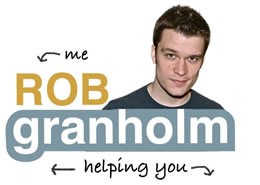Websites
Obviously you know what a website is but in order to talk with developers, designers or build one yourself, you’re going to have to learn what the technology that runs most websites is called and what it looks like. At least conceptually.
You’ll be able to speak to a builder or look at a set of words and “get it” once you can look at a website and identify most of it’s parts. Similar to hiring a contractor to work on your home. If you want a bay window installed, but don’t know that it is called a “bay window”, you’d have a hard time explaining what you want.
Conceptual understandings will take you a long long way!
Common Website Technologies
- HTML – the fundamental building block code that makes up websites today. HTML uses a markup language, the most basic common elements are <h1> for Header 1 <p> for paragraphc and <br> for line break

- CSS – a styling system that works with HTML. In CSS code you define pieces of HTML to have certain attributes, like font size, or line height, or width and height
- Flash – a technology from Adobe that taxes computer systems to run interactive modules, uses specialized coding, popular with games and video players
- WordPress – a popular platform that runs on top a web host. WordPress is praised for it’s user friendliness to newcomers and developers for blogging, website creation, and content management
- Plugin – a generic term for a module that get’s added onto a core platform, typically for enhancing capabilities
- Image Maps – image maps are normal images with extra code that marks certain sections of an image to be used as a link. image maps allow you to load one image, but have certain areas of the image link to different places.
- Java – a programming language used to build application. Java is used on the web for running web apps, desktop-application-like modules that run in your web browser
- Database – a collection of data structured in a way that a computer understands more than a human. Databases are typically used behind the scenes and designed so a platform, like WordPress, or Facebook, can access huge amounts of data in a defined structure. you can think of it as an organized filing cabinet for technology platforms
Common Website Terminology
- Header – the top portion of a website, may include an image or not, typically the full width of a website
- Logo – a stand alone image, used for identification and branding
- Navigation Menu – links, text or image that lead to various parts of a website, typically found a the top and bottom of a website, but can be placed anywhere with enough customization
- Theme – a preset design, typically used in “platform” based websites, also called templates. Themes can be built to be heavily customized, or meant not to be altered more than changing out a logo, themes vary wildly
- Content Area – the largest part of a page meant for content, sometimes paired with a sidebar, typically under the header, and above the footer
- Sidebar – an area on the side of a website, typically the same on all pages, meant for additional calls to action
- Footer – the bottom portion of a site meant, typically meant for regulatory information or a bottom of the page call to action
- Post – a page on a site meant to be chronological with other posts, with comments, usage can vary
- Page – a page on a site meant to be static, or not updated often, usage can vary
- Blog – a website focused on routinely updated content, most often displayed on the homepage, usage varies
- Blog Page – a page on a site that shows a date ordered view of posts, can but does not have to be the homepage
- Typography – the size and style of the various text on a website. paragraph, blockquote, header 1-4, bullet points, etc.
- Slider – a module on a site meant to cycle through or display something prominently, names and usage vary wildly
- Call to action – an area meant to draw attention and require user action, clicking or entering an e-mail most commonly
- Opt-in – the combination of a call to action, and a field to enter information in order to track and store that information for later use, typically for newsletters or sending sales e-mails.
- Frontend – the portion of a website meant to be seen by your users or audience
- Backend – the portion of a website used to change, develop or alter the front end in some way
- Embed – placing code on one page, that displays content from a different page at the time of loading, for example, embedding a YouTube video does not put the video on your website host, it just “pulls” the video data from YouTube, when someone views a page with embed code on your site.
- SEO – Search Engine Optimization is the performing of actions you take on a site to rank highly within natural [meaning not paid] search engine results for a specific set of keywords.
